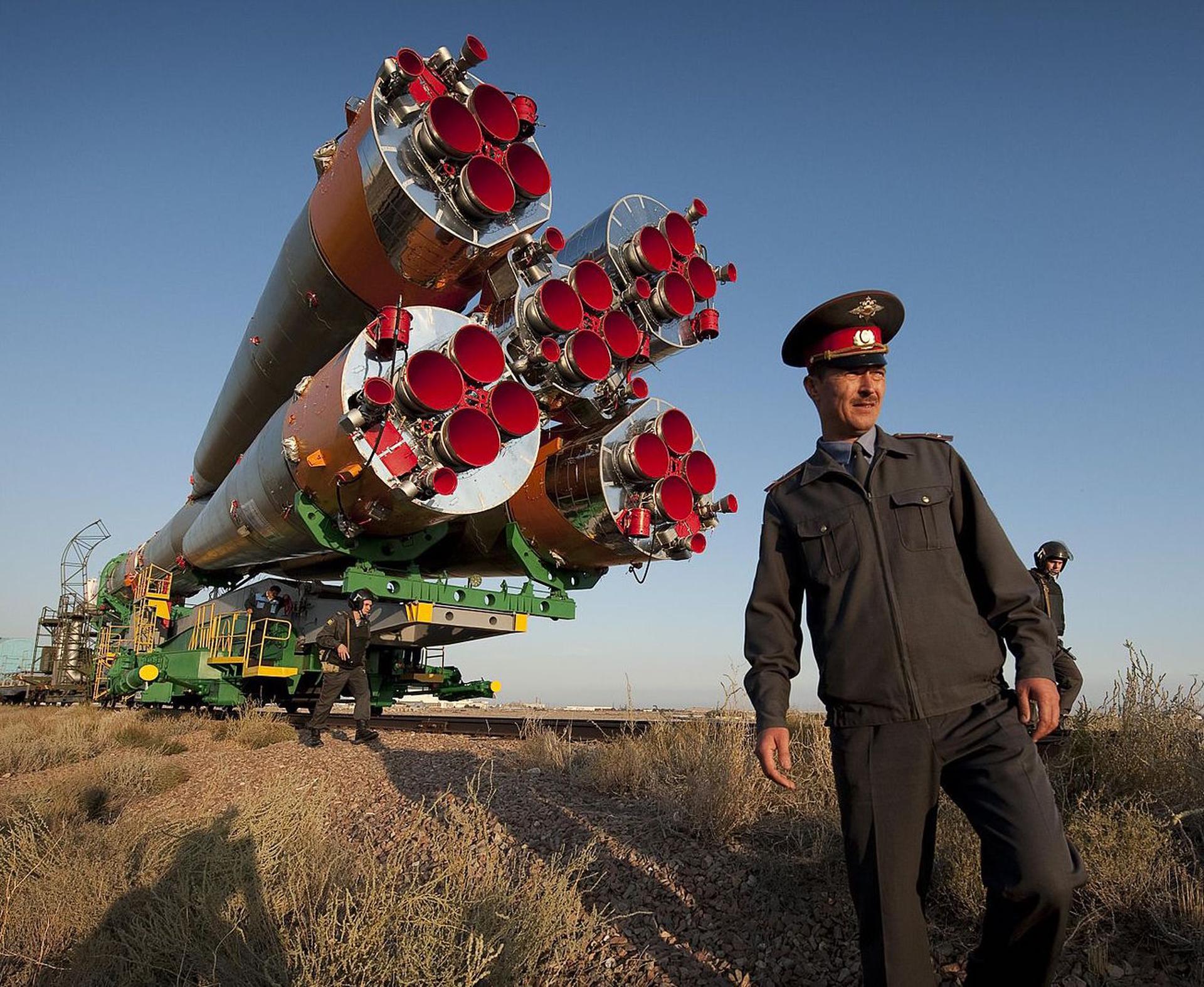· space brief · 5 min read
Space Brief 31 Oct 2024
SpaceX achieves a new launch record with its Starlink mission, NASA's Perseverance rover captures eerie Martian winds, and Buzz Aldrin endorses Trump. Plus, discussions around space debris and military space tech agreements.

📄Top Stories
SpaceX’s recent Starlink mission sets the company’s record with 69 launches from Florida’s Space Coast in 2024. Additionally, the Perseverance rover on Mars captures its surroundings, adding to the eerie feel of Halloween with the sounds of Martian winds. Meanwhile, astronaut Buzz Aldrin makes headlines by endorsing Donald Trump for the presidency, citing space advancements during Trump’s first term.
📰Detailed Coverage
SpaceX Sets Record with 69 Launches in 2024
SpaceX has marked a new personal record by completing its 69th launch from Florida this year as part of its extensive Starlink project. The company’s ambitious plan to expand global internet service aligns with its steadily increasing launch cadence, with real-time satellite tracking providing essential insights into orbit management.
The successful deployment of the latest batch of Starlink satellites further highlights SpaceX’s role in reshaping access to satellite internet services. As the company aims to launch tens of thousands of additional satellites, concerns over space debris and orbital crowding become increasingly pertinent. Users can track these satellite deployments using our web app’s real-time tracking features.
Read the full story: Phys.org
Martian Sounds Recorded by Perseverance Rover
NASA’s Perseverance rover has captured audio of Martian winds, offering a spine-tingling glimpse of the red planet’s atmosphere just in time for Halloween. The sounds are recorded through the rover’s advanced microphone technology, painting an auditory picture of the Jezero Crater’s desolate landscape.
This audio breakthrough assists scientists in understanding weather conditions on Mars, contributing to the ongoing exploration efforts. Such findings are crucial for preparing future manned missions to Mars, which are closely tied to the advancements in tracking and navigation systems used in satellite technology.
Read the full story: Phys.org
Buzz Aldrin Publicly Endorses Trump for Presidency
Legendary astronaut Buzz Aldrin has endorsed Donald Trump in the upcoming U.S. presidential election, citing initiatives in space policy under Trump’s administration as a catalyst for renewed interest in human space exploration. Aldrin highlighted the Artemis mission and the establishment of the U.S. Space Force as key efforts that have strengthened America’s space presence.
Aldrin’s endorsement underscores the intersection of politics and space policy, an important consideration for stakeholders in satellite tracking and defense. The political landscape can significantly influence the funding and direction of national space programs, impacting satellite operations and international cooperation.
Read the full story: Space.com
NRO’s Strategic Tech Agreements Expand Military Space Capabilities
The National Reconnaissance Office (NRO) has announced agreements with Cognitive Space, Impulse Space, and Starfish Space. These contracts aim to explore “Agile Launch Innovation and Strategic Technology Advancement,” focusing on enhancing national security through advanced space technology.
The strategic partnerships reflect the growing importance of agile and responsive space capabilities, which are crucial for modern satellite tracking and reconnaissance missions. These advancements will bolster national defense operations and widen the scope of satellite usage in security applications.
Read the full story: SpaceNews
Artemis 3 Moon Landing Sites List Updated
NASA has refined its list of potential landing sites for the Artemis 3 mission, focusing on the lunar south pole. The updates consider terrain conditions and the capabilities of SpaceX’s Starship lander, underlining the strategic partnerships crucial for Artemis’ success.
These updates are a positive signal for commercial space enterprises and highlight the need for precise satellite tracking systems to support lunar exploration missions. As these efforts progress, our web app can provide real-time data tracking for ongoing mission planning and execution.
Read the full story: SpaceNews
🛰️Satellite Spotlight
- Satellite Name: GALAXY 8
- NORAD ID: 25086
- Launch Date: 1997-12-13
- Mission: Telecommunications satellite supporting a wide arrays of broadcast services
- Orbit: Inclination 13.6519°, Period 1444.28 min, Eccentricity 0.0003489
- Operator: PanAmSat Corporation (now part of Intelsat)
- Fun Fact: Galaxy 8 was part of an early batch of satellites that provided key infrastructure for satellite television services in the late 1990s.
Current TLE Data:
1 25086U 97078A 24303.85438413 .00000008 00000-0 00000+0 0 99997
2 25086 13.6519 14.1904 0003489 82.5745 267.3955 0.99703547 98077
Track this satellite in real-time on our web app: Track GALAXY 8
🚀Upcoming Space Launches
October 31
- Russian Space Forces Soyuz 2.1b:
- Kosmos (Unknown Payload) from Plesetsk Cosmodrome, Russian Federation (07:00 UTC) Russian military payload of unknown purposes.
November 3
- SpaceX Falcon 9:
- Starlink Group 6-77 from Cape Canaveral SFS, FL, USA (21:57 UTC) A batch of satellites for the Starlink mega-constellation - SpaceX’s project for space-based Internet communication system.
November 4
Mitsubishi Heavy Industries H3-22:
- DSN 3 (Kirameki 3) from Tanegashima Space Center, Japan (06:48 UTC) A geostationary communications satellite for military communications by the Japanese military.
Rocket Lab Electron:
- Changes In Latitudes, Changes In Attitudes from Rocket Lab Launch Complex 1, Mahia Peninsula, New Zealand (10:30 UTC) Launch of a yet to be identified satellite suspected to be for E-Space, a Low Earth Orbit communication satellite constellation operator.
Russian Federal Space Agency (ROSCOSMOS) Soyuz 2.1b/Fregat-M:
- Ionosfera-M 1 & 2 from Vostochny Cosmodrome, Siberia, Russian Federation (23:18 UTC) Ionosfera is a constellation for ionospheric and magnetospheric research with various scientific instruments aboard.
November 5
SpaceX Falcon 9:
- Dragon CRS-2 SpX-31 from Kennedy Space Center, FL, USA (02:29 UTC) The 31st commercial resupply services mission to the International Space Station supplying critical materials for science and research.
SpaceX Falcon 9:
- Starlink Group 9-10 from Vandenberg SFB, CA, USA (07:46 UTC) Another batch of satellites for the Starlink mega-constellation for space-based Internet communication.
November 21
- Russian Federal Space Agency (ROSCOSMOS) Soyuz 2.1a:
- Progress MS-29 (90P) from Baikonur Cosmodrome, Republic of Kazakhstan (12:22 UTC) Progress resupply mission to the International Space Station.
Note: Launch dates and times are subject to change due to technical or weather considerations.





